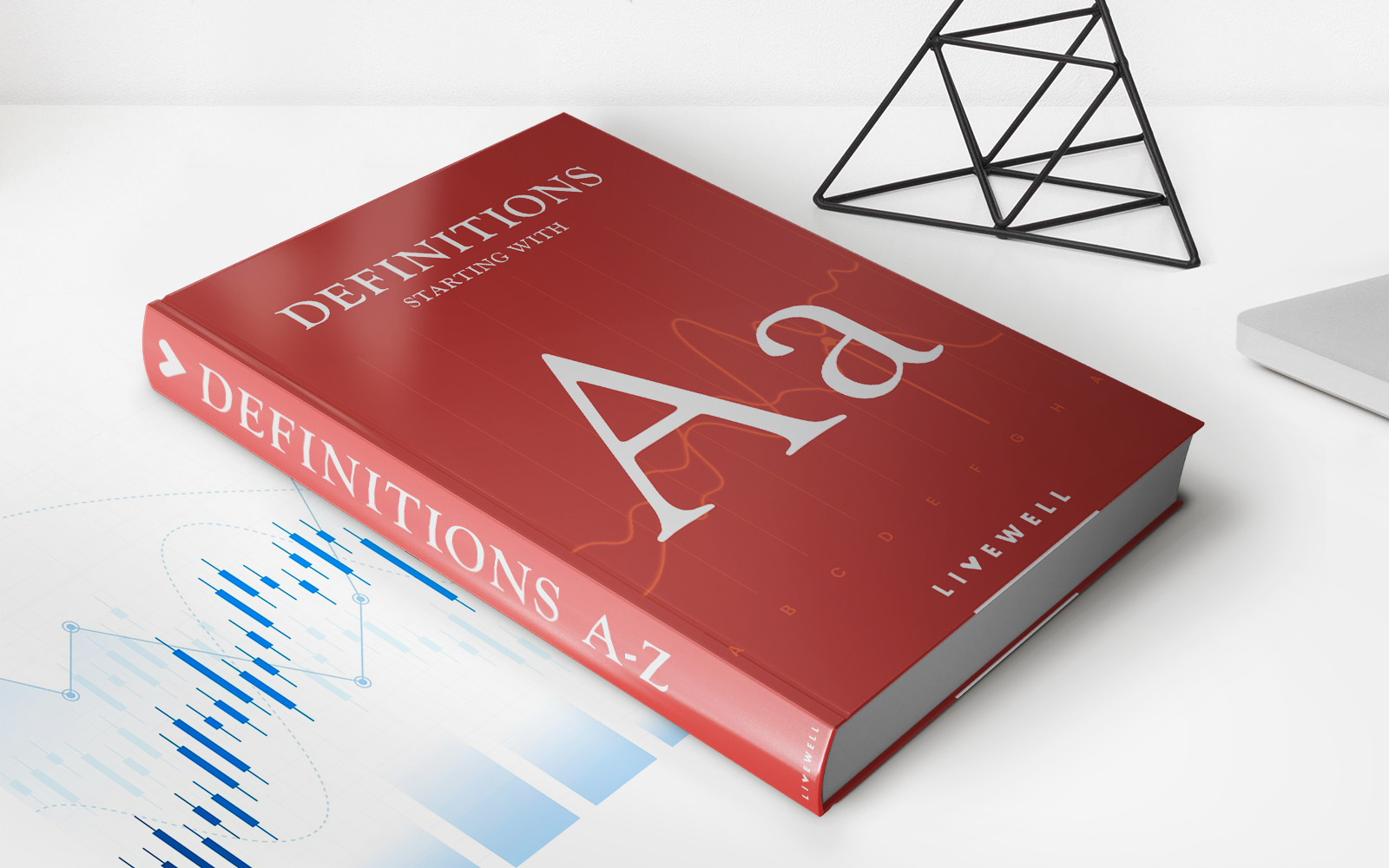

Finance
What Is An Open-End Credit?
Modified: February 21, 2024
Learn about open-end credit and how it can affect your finances. Discover the benefits, risks, and key considerations for managing this type of credit responsibly.
(Many of the links in this article redirect to a specific reviewed product. Your purchase of these products through affiliate links helps to generate commission for LiveWell, at no extra cost. Learn more)
Table of Contents
Introduction
When it comes to managing finances, there are various credit options available to individuals and businesses. One such option is open-end credit, which provides flexibility and convenience to borrowers. Open-end credit is a type of credit arrangement that allows borrowers to access funds up to a certain limit, known as the credit limit, and repay the borrowed amount over a period of time.
Unlike closed-end credit, which has a fixed repayment term, open-end credit offers a revolving line of credit. This means that borrowers can continuously borrow and repay funds as needed, as long as they stay within their credit limit. Open-end credit is commonly associated with credit cards, lines of credit, and overdraft protection.
In this article, we will explore the definition, workings, types, benefits, drawbacks, and factors to consider before obtaining open-end credit. Additionally, we will discuss how to manage open-end credit responsibly to avoid debt traps and maintain a healthy financial state.
Definition of Open-End Credit
Open-end credit, also known as revolving credit, is a type of credit arrangement that allows borrowers to access funds up to a predetermined credit limit. This credit limit is set by the lender based on the borrower’s creditworthiness and financial stability. With open-end credit, borrowers have the flexibility to borrow and repay funds on an ongoing basis, as long as they adhere to the terms and conditions set by the lender.
This type of credit is different from closed-end credit, which has a fixed repayment term and requires borrowers to make regular payments over a specified period. Open-end credit, on the other hand, is more flexible, as borrowers can choose to repay the borrowed amount in full or make minimum monthly payments. Additionally, borrowers can continue to use the available credit as long as they do not exceed their credit limit.
Open-end credit is commonly associated with credit cards, where customers can make purchases and then repay the borrowed amount over time. It is also seen in lines of credit, where borrowers can access funds as needed and only pay interest on the amount borrowed. Another form of open-end credit is overdraft protection, which allows individuals to overdraw their bank accounts up to a certain limit to cover unforeseen expenses.
It is important to note that open-end credit is typically accompanied by an Annual Percentage Rate (APR), which represents the cost of borrowing over a year. The APR can vary depending on the lender and the borrower’s creditworthiness. Borrowers should pay attention to the APR, as it can significantly impact the overall cost of borrowing.
Overall, open-end credit provides borrowers with the convenience and flexibility to access funds as needed and manage their finances more effectively. However, it is essential to understand the terms and conditions of the credit agreement and use open-end credit responsibly to avoid falling into a cycle of debt.
How Open-End Credit Works
Open-end credit operates on the principle of a revolving line of credit, allowing borrowers to borrow and repay funds multiple times within the credit limit. Here’s a breakdown of how open-end credit works:
- Application and Approval: To access open-end credit, individuals or businesses need to apply with a lender. The lender will evaluate their creditworthiness, income, and other factors to determine whether to approve the credit application. Once approved, the lender sets a credit limit, which represents the maximum amount that can be borrowed.
- Borrowing Funds: Borrowers can access the available credit by making purchases with a credit card, withdrawing money from a line of credit, or utilizing overdraft protection. The amount borrowed is added to the outstanding balance.
- Repayment Options: Open-end credit offers various repayment options. Borrowers can choose to repay the full outstanding balance by the due date to avoid interest charges. Alternatively, they can make minimum monthly payments, which are typically a percentage of the outstanding balance. However, making only minimum payments can result in higher interest charges and a longer time to repay the debt.
- Interest Charges: If the borrower carries a balance beyond the grace period, interest is charged on the outstanding balance. The interest rate, often represented as the Annual Percentage Rate (APR), can vary depending on factors such as the borrower’s credit score and the type of open-end credit. It’s important to note that high-interest rates can significantly increase the cost of borrowing.
- Credit Limit and Available Credit: As borrowers make repayments, the repaid amount becomes available credit that they can borrow again. The credit limit represents the maximum amount that can be borrowed at any given time. However, it’s crucial to stay within the credit limit to avoid penalties and over-limit fees.
By utilizing open-end credit responsibly, borrowers can benefit from the flexibility and convenience it offers. It allows them to access funds as needed, manage cash flow, and handle unexpected expenses. However, it’s important to monitor spending and make timely repayments to avoid falling into a cycle of debt and maintain a healthy credit score.
Types of Open-End Credit
Open-end credit comes in various forms, each designed to meet different borrowing needs. Here are some common types of open-end credit:
- Credit Cards: Credit cards are perhaps the most well-known form of open-end credit. They allow individuals to make purchases up to a certain credit limit and repay the borrowed amount over time. Credit cards offer the convenience of worldwide acceptance and often come with additional perks such as rewards programs and purchase protection.
- Lines of Credit: A line of credit is a flexible borrowing arrangement where borrowers can access funds up to a predetermined limit. This type of open-end credit is often used for more significant expenses, such as home improvements or educational expenses. Borrowers only pay interest on the amount they borrow and can draw funds as needed.
- Overdraft Protection: Overdraft protection is a type of open-end credit linked to a checking account. It allows individuals to overdraw their account up to a specific limit to cover transactions when there are insufficient funds in the account. Overdraft protection can help avoid declined transactions and costly overdraft fees.
- Retail Store Cards: Retail store cards, also known as store credit cards, are offered by specific retailers to encourage customer loyalty. They function like credit cards, allowing individuals to make purchases at the associated store and repay the borrowed amount over time. Retail store cards often come with special discounts and rewards.
- Home Equity Lines of Credit (HELOC): HELOCs are open-end credit options that use a borrower’s home equity as collateral. They provide access to funds up to a certain percentage of the home’s appraised value. HELOCs are commonly used for home renovations, debt consolidation, or other significant expenses.
It’s important to understand the terms and conditions, interest rates, and fees associated with each type of open-end credit. Different types of open-end credit can have varying features and benefits, so borrowers should choose the option that aligns with their financial goals and borrowing needs.
Benefits of Open-End Credit
Open-end credit offers several benefits for borrowers who can manage their finances responsibly. Here are some advantages of utilizing open-end credit:
- Flexibility: One of the primary benefits of open-end credit is its flexibility. Borrowers have the freedom to access funds as needed, up to their credit limit. Whether it’s for a small purchase or a larger expense, open-end credit provides the convenience of instant access to funds without the need for loan applications or approvals.
- Convenience: With open-end credit options like credit cards, borrowers can make purchases at various merchants locally and internationally. This convenience eliminates the need to carry cash and allows for hassle-free transactions both online and offline.
- Revolving Line of Credit: Unlike closed-end credit, open-end credit operates as a revolving line of credit. This means that as borrowers make repayments, the repaid amount becomes available credit that they can borrow again. This revolving feature provides continuous access to funds without the need to reapply for credit.
- Builds Credit History: Properly managed open-end credit can help individuals build a positive credit history. Making timely payments and maintaining a low credit utilization ratio demonstrates financial responsibility to creditors and can improve credit scores, which in turn can lead to better interest rates and borrowing opportunities in the future.
- Rewards and Perks: Many open-end credit options, such as credit cards, come with rewards programs, cashback offers, or other perks. Cardholders can benefit from earning rewards points or cashback on their purchases, making open-end credit a more desirable option for daily expenses.
- Emergency Funds: Open-end credit can serve as a safety net in case of emergencies. Having access to a line of credit or overdraft protection can provide financial peace of mind by ensuring that there are funds available to cover unexpected expenses.
While open-end credit offers numerous benefits, it’s important to use it responsibly and avoid excessive borrowing. Mismanaging open-end credit can lead to debt accumulation, high-interest charges, and financial instability. Understanding the terms, fees, and interest rates associated with open-end credit can help borrowers make informed decisions and fully enjoy the benefits it provides.
Drawbacks of Open-End Credit
While open-end credit offers flexibility and convenience, there are also drawbacks that borrowers should be aware of. Here are some potential disadvantages of utilizing open-end credit:
- High Interest Rates: Open-end credit, particularly credit cards, often come with higher interest rates compared to other forms of credit. If borrowers carry a balance from month to month and only make minimum payments, they can end up paying substantial interest charges, significantly increasing the overall cost of borrowing.
- Temptation to Overspend: Having access to a revolving line of credit can lead to temptation and overspending. The ease of using open-end credit, coupled with marketing tactics and incentives, can entice borrowers to make unnecessary purchases or spend beyond their means, thereby increasing the risk of debt accumulation.
- Additional Fees: Open-end credit can be accompanied by various fees. Credit cards, for example, may have annual fees, late payment fees, balance transfer fees, and cash advance fees. These fees can add up and further increase the cost of borrowing if borrowers are not vigilant in managing their credit accounts.
- Impact on Credit Score: While responsible use of open-end credit can help build a positive credit history, misuse or late payments can have a negative impact on credit scores. Defaults or excessive borrowing can damage credit scores and make it more challenging to obtain favorable credit terms in the future.
- Debt Accumulation: Without diligent repayment practices, borrowers can easily fall into a cycle of debt with open-end credit. Making only minimum payments can extend the repayment period and result in long-term debt accumulation. This can lead to financial stress, limited opportunities for savings, and a decreased ability to meet other financial goals.
- Fraud and Identity Theft Risks: Open-end credit, especially credit cards, can be vulnerable to fraud and identity theft. Lost or stolen cards, unauthorized transactions, or information breaches can lead to substantial financial losses and the need for time-consuming dispute resolutions.
It’s important for borrowers to be mindful of these drawbacks and exercise responsible financial management when using open-end credit. By staying aware of spending habits, making timely payments, and being cautious of potential risks, borrowers can mitigate the disadvantages and ensure that open-end credit remains a useful tool for their financial needs.
Factors to Consider Before Obtaining Open-End Credit
Before obtaining open-end credit, it is crucial to carefully evaluate various factors to ensure that it aligns with your financial goals and circumstances. Here are some important factors to consider:
- Financial Situation: Assess your current financial situation, including income stability, expenses, and existing debts. Understanding your financial capacity will help you determine whether you can afford the additional credit and make timely repayments.
- Interest Rates and Fees: Compare interest rates and fees associated with different open-end credit options. Consider the Annual Percentage Rate (APR) and any annual fees, late payment fees, or transaction fees. Lower interest rates and reasonable fee structures can result in lower borrowing costs.
- Credit Limit and Utilization: Evaluate the credit limit offered by the lender and your potential credit utilization. A higher credit limit can provide more flexibility, but it is crucial not to exceed your repayment capabilities or risk accumulating high levels of debt.
- Repayment Terms: Review the repayment terms and options provided by the open-end credit provider. Consider whether you are comfortable with making minimum monthly payments or if you prefer to repay the balance in full each month. Understanding the repayment requirements will help you plan your finances and avoid unnecessary interest charges.
- Credit Score Impact: Open-end credit utilization can impact your credit score. Consider the potential effects on your credit score and overall creditworthiness. Utilizing open-end credit responsibly and making timely payments can positively influence your credit history, while mismanaging it can have adverse effects.
- Rewards and Perks: If the open-end credit option offers rewards programs or perks, evaluate whether they align with your spending habits and preferences. Consider the value of the rewards and whether they outweigh any associated fees or higher interest rates.
- Penalties and Default Consequences: Familiarize yourself with the penalties and consequences of defaulting or missing payments. Understand the potential impact on your credit score, additional fees, and the lender’s policies regarding late payments or exceeding the credit limit.
- Lender Reputation: Research and consider the reputation and credibility of the lender offering open-end credit. Look into their customer service quality, accessibility, and reviews to ensure a positive borrowing experience.
By carefully considering these factors, you can make an informed decision about obtaining open-end credit that suits your financial circumstances and goals. Remember, responsible utilization and timely repayments are essential to maximize the benefits and minimize the potential risks associated with open-end credit.
Managing Open-End Credit Responsibly
Managing open-end credit responsibly is crucial to avoid falling into a cycle of debt and maintain a healthy financial state. Here are some tips for effectively managing open-end credit:
- Create a Budget: Establish a budget to track your income and expenses. Allocate a portion of your budget towards repaying open-end credit balances to ensure you can meet the payment obligations. A budget will help you stay organized and avoid overspending.
- Pay on Time, Every Time: Make timely payments for your open-end credit accounts. Late payments can lead to penalties, increased interest charges, and a negative impact on your credit score. Set reminders or automate payments to ensure you don’t miss any due dates.
- Avoid Carrying a High Balance: Aim to keep your credit utilization ratio (the percentage of your available credit that you are using) low. Carrying a high balance can negatively impact your credit score and increase the overall cost of borrowing due to increased interest charges.
- Pay More Than the Minimum: Whenever possible, pay more than the minimum payment required. By paying more, you can reduce the outstanding balance faster and save on interest charges. Paying only the minimum amount can lead to a longer repayment period and increased borrowing costs.
- Monitor Your Credit: Regularly review your credit reports to ensure accuracy and identify any potential errors or fraudulent activity. Monitoring your credit allows you to address any issues promptly and protect your creditworthiness.
- Avoid Unnecessary Spending: Use open-end credit for necessary and planned expenses, rather than impulsive purchases. Be mindful of your spending habits and avoid using credit to buy items that you can’t afford or don’t truly need.
- Track Your Transactions: Keep track of your open-end credit transactions, whether it’s through a credit card statement or online banking. Regularly review your statements and cross-reference them with your records to identify any discrepancies or unauthorized charges.
- Review Your Options Periodically: Re-evaluate your open-end credit options periodically. Check if there are better interest rates, lower fees, or more suitable rewards programs available. It’s possible to transfer balances to take advantage of promotional offers, but be cautious of any associated fees.
- Seek Professional Advice if Needed: If you find managing your open-end credit challenging or are struggling with debt, consider consulting a financial advisor or credit counselor. They can provide guidance tailored to your specific situation and help you develop a personalized plan to manage your open-end credit responsibly.
By implementing these practices, you can manage open-end credit responsibly and avoid financial stress. It’s important to remember that open-end credit is a tool that should be used mindfully and in line with your financial goals and capabilities.
Conclusion
Open-end credit offers flexibility and convenience for borrowers, allowing them to access funds up to a certain credit limit and repay the borrowed amount over time. It can be a valuable tool for managing expenses, addressing unforeseen financial needs, and building a positive credit history. However, it is essential to approach open-end credit with caution and responsible financial management.
In this article, we have explored the definition of open-end credit and how it works. We have discussed the different types of open-end credit, including credit cards, lines of credit, and overdraft protection. Additionally, we have examined the benefits, drawbacks, and factors to consider before obtaining open-end credit.
To manage open-end credit responsibly, it is important to create a budget, make timely payments, and avoid carrying a high balance. Maintaining a low credit utilization ratio and monitoring your credit are also key strategies. By understanding the terms, fees, and interest rates associated with open-end credit, borrowers can make informed decisions and avoid excessive debt accumulation.
Remember, open-end credit should be used as a tool to support financial goals and needs, but it requires discipline and responsible financial management. By following these guidelines, borrowers can effectively utilize open-end credit, maintain a healthy financial state, and work towards their long-term financial success.














